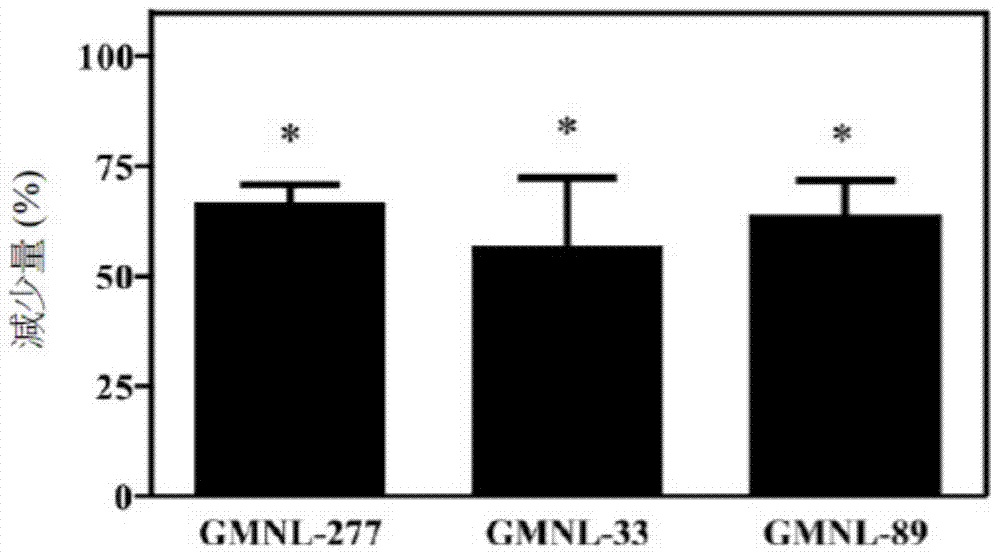Probiotic composition and use thereof for treating picornavirus infection
A microRNA, virus infection technology, applied in the direction of microorganisms, microorganism-based methods, antiviral agents, etc., can solve problems such as no literature reports
- Summary
- Abstract
- Description
- Claims
- Application Information
AI Technical Summary
Problems solved by technology
Method used
Image
Examples
Embodiment 1
[0074] The applicant in this case (Jingyue Biotechnology Company) isolated more than 600 isolates from the gastrointestinal tract samples of healthy adults to establish a strain bank of isolates. The collection status, acquisition time, collectors, and contact information of the collectors are shown in Table 1.
[0075] Table 1. Genetic resource information
[0076]
[0077] Lactobacilli that can inhibit enteroviruses were selected from the strain bank, and the top three Lactobacilli in the analysis results were selected for virus growth inhibition analysis. The preservation numbers, preservation dates and strain names of the three strains of Lactobacillus are shown in Table 2; wherein Lactobacillus paracasei (Lactobacillus paracasei) GMNL-33 and Reuteri Lactobacillus (Lactobacillus reuteri) GMNL-89 are all disclosed above The strain characteristics, preservation certificates, survival test reports and other certification documents and related information have been include...
Embodiment 2
[0081] For the identification of the scientific name of Lactobacillus casei (Lactobacillus casei) GMNL-277, the isolate GMNL-277 was entrusted to Taiwan Hsinchu Food Industry Development Institute to carry out the identification of the bacterial scientific name. Road; the medium is MRS; the culture temperature is 37°C; pathogenicity: none.
[0082] The analysis results show that the isolate GMNL-277 is a Gram-positive bacillus without catalase, oxidase and motility, can grow in both aerobic and anaerobic environments, and will not produce endospores (such as figure 1 shown). In addition, the 16S rDNA partial sequence of the isolate GMNL-277 is shown in SEQ ID No: 1. According to the 16S rDNA analysis, the similarity between the isolate GMNL-277 and Lactobacillus casei is as high as 99%. Then analyzed by the Biolog microbial identification system, the isolate GMNL-277 was the closest to Lactobacillus casei. Therefore, the above results show that the isolate GMNL-277 is Lactob...
Embodiment 3
[0084] The ability of probiotics to inhibit enterovirus type 71:
[0085] In this experiment, three different probiotics were used to test three cell lines, and three different modes were used to test the ability of probiotics to inhibit enterovirus 71, namely pre-treatment, co-incubation and post-treatment. (post-treatment), then use TCID 50 Assay determines the difference in virus load after probiotic treatment, and the concentration of probiotics is at 10 7 CFU / mL, relatively non-cytotoxic to RD, HT-29 and Caco-2 cell lines, with 10 7 The concentration of probiotics in CFU / mL is tested; the antiviral effect is measured at 100TCID 50 As the best, the experimental results are shown in Table 3.
[0086] Table 3. Inhibition percentage of three strains of probiotics inhibiting enterovirus type 71 on three different cell lines (unpaired ttest, *: P<0.05)
[0087]
[0088]The results show that in the RD cells in the pretreatment experiment, the three strains of probiotics o...
PUM
 Login to View More
Login to View More Abstract
Description
Claims
Application Information
 Login to View More
Login to View More - R&D
- Intellectual Property
- Life Sciences
- Materials
- Tech Scout
- Unparalleled Data Quality
- Higher Quality Content
- 60% Fewer Hallucinations
Browse by: Latest US Patents, China's latest patents, Technical Efficacy Thesaurus, Application Domain, Technology Topic, Popular Technical Reports.
© 2025 PatSnap. All rights reserved.Legal|Privacy policy|Modern Slavery Act Transparency Statement|Sitemap|About US| Contact US: help@patsnap.com



